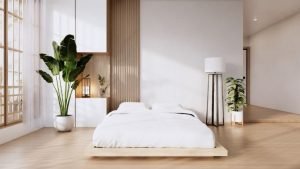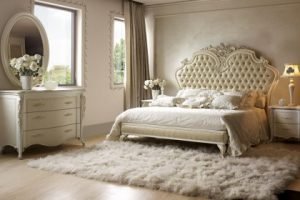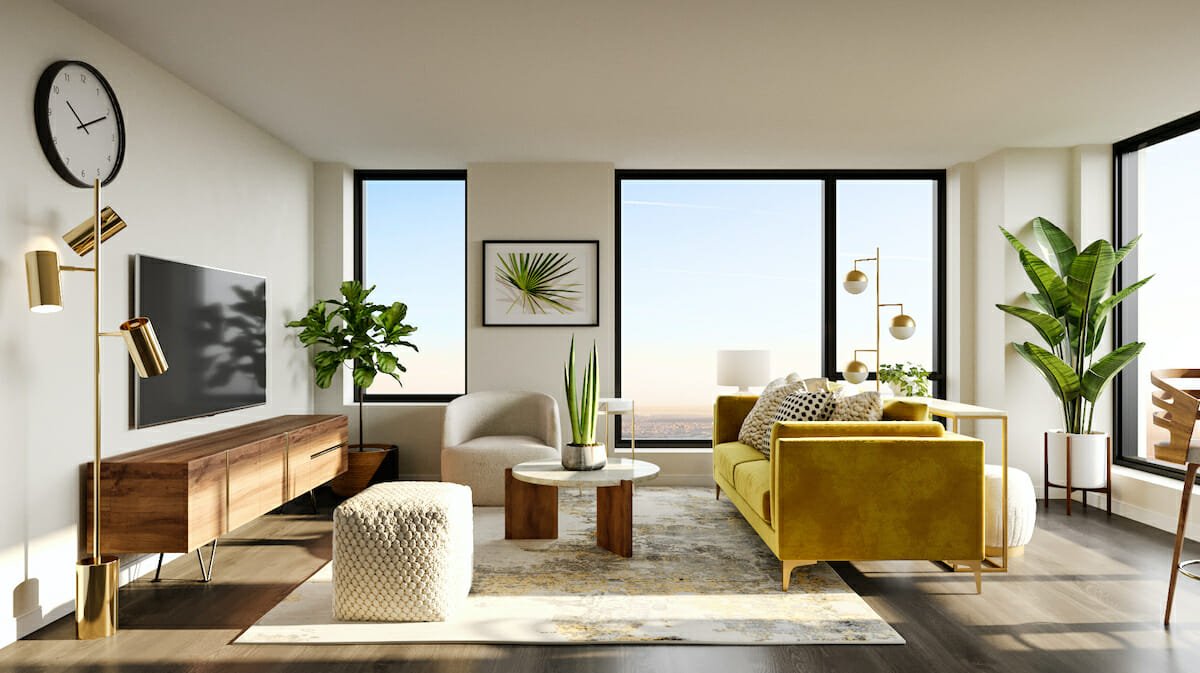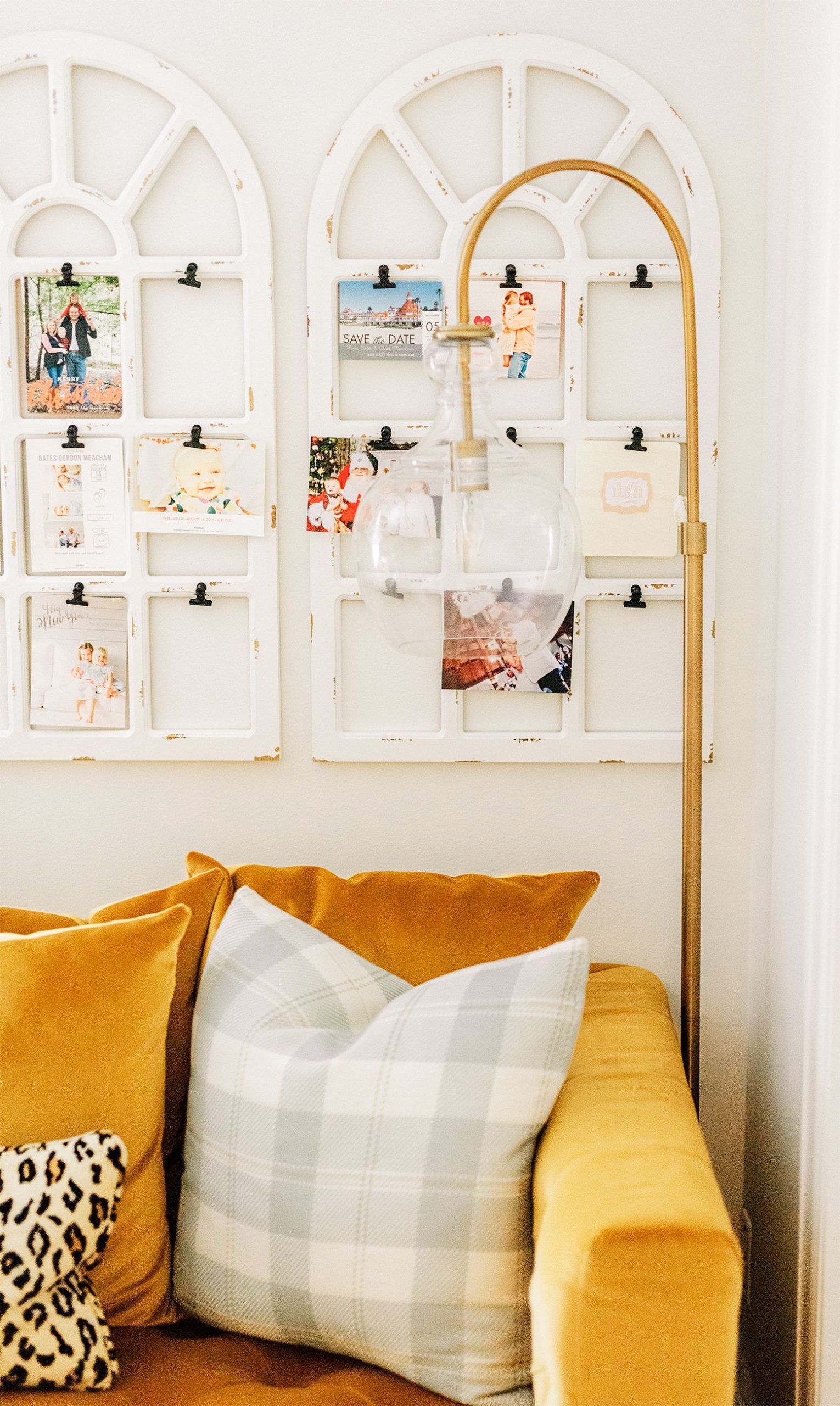Designing a bedroom is like creating a personal sanctuary, a space that reflects your style, comforts you after a long day, and rejuvenates you for the next. It’s where dreams are dreamt, ideas are conceived, and tranquility is sought. But how can one achieve the perfect balance between aesthetics and functionality? How do you create an environment that captures your unique personality while promoting restful sleep? In this article, we will delve into the art of bedroom design – uncovering tips and tricks to transform your sleeping quarters into an oasis of comfort and style. Whether you’re starting from scratch or seeking inspiration to revamp your existing space, get ready to unlock the secrets behind designing the bedroom of your dreams.

Assessing The Space:
When designing a bedroom, it is crucial to carefully assess the space you have available. This process involves taking accurate measurements and considering the room’s layout, including any architectural features or obstacles. By understanding the dimensions of your space, you can make informed decisions about furniture placement and overall design choices.
- One important consideration when assessing your bedroom space is to identify any potential focal points. Focal points can be existing architectural elements such as large windows or a beautiful fireplace, or they can be created through clever design choices like an accent wall or a statement piece of furniture. By highlighting these focal points in your bedroom design, you create visual interest and draw attention to specific areas of the room.Another aspect to consider when evaluating your bedroom space is natural lighting. The amount and direction of natural light that enters the room will impact how it feels and functions. Consider positioning your bed near a window so that you can enjoy waking up to natural sunlight each morning, but ensure that there are also options for privacy and light control if needed.
Overall, assessing your bedroom space allows you to optimize its functionality and flow while creating an aesthetically pleasing environment. By carefully measuring and evaluating the dimensions, identifying focal points, and maximizing natural lighting opportunities, you can design a bedroom that is both practical and visually appealing.
Choosing A Color Scheme:
When it comes to designing a bedroom, one of the most important decisions you’ll make is choosing a color scheme. The colors you choose can have a significant impact on the overall mood and atmosphere of the space. So, how do you go about selecting the right color scheme for your bedroom?
- First and foremost, consider the purpose of your bedroom. Are you looking to create a serene and tranquil oasis or a vibrant and energetic space? Understanding this will help guide your color choices. For example, calming shades of blue or green may be perfect for creating a peaceful ambiance, while bold hues like red or yellow can add excitement and energy.
- Another factor to consider is personal preference and individual taste. Don’t be afraid to think outside the box and opt for colors that truly resonate with you. Experiment with different combinations or mix in unexpected accents to create a unique look that reflects your personality.
- Lastly, remember that light plays an essential role in how colors appear in a room. Consider both natural lighting during different times of day as well as artificial lighting when making your color selections. Brighter spaces may benefit from lighter shades to enhance the sense of spaciousness, while rooms with less natural light could benefit from warm tones to create coziness.
In conclusion, choosing a color scheme for your bedroom requires careful consideration of its intended purpose, personal taste, and lighting conditions.
Furniture Selection And Placement:
When it comes to designing a bedroom, furniture selection and placement play a crucial role in creating a harmonious and functional space. Before choosing your furniture pieces, consider the size of your bedroom and the purpose it serves. For smaller bedrooms, opt for multifunctional furniture that maximizes storage without sacrificing style. Consider a bed with built-in drawers or shelves and choose compact dressers or nightstands that provide ample storage while taking up minimal floor space.
Placement is equally important when it comes to furniture arrangement. Start by identifying the focal point of your bedroom, which is typically the bed. Positioning the bed against a wall opposite the entrance can create a sense of balance and allow for easy access to other furniture items. Avoid placing large pieces of furniture near windows or doors as they can obstruct natural light and disrupt traffic flow within the room.
Another factor to consider is creating visual interest through furniture placement. Experiment with different angles and orientations to add depth to your bedroom’s design. Place an armchair in one corner along with a small side table for cozy reading nooks or install floating shelves above dressers or desks for added display opportunities.

Lighting And Ambiance:
Lighting and ambiance play a crucial role in creating the perfect atmosphere in your bedroom. The right lighting can transform a dull space into a warm and inviting sanctuary. Start by opting for soft, warm lights instead of harsh, bright ones. Consider installing dimmer switches so you can easily adjust the brightness according to your mood or activity.
In addition to choosing the right lighting fixtures, think about how you can incorporate natural light into your bedroom design. Natural light not only adds depth and warmth to the space but also has numerous health benefits. To maximize natural light, position your bed near a window or add mirrors strategically throughout the room to reflect sunlight.
Adding Personal Touches:
When it comes to designing your bedroom, adding personal touches is what truly makes the space feel like your own. These are the elements that reflect your personality and create a sense of comfort and belonging. Whether it’s displaying photographs of loved ones, incorporating sentimental mementos or showcasing artwork that speaks to your soul, these personal touches add depth and character to any room.
- One way to incorporate personal touches in your bedroom is through textiles. Choose fabrics that resonate with you, whether it’s a cozy throw blanket with your favorite color or a patterned pillow that reminds you of a special trip. These small details can transform your space and make it uniquely yours.
- Another way to infuse personality into your bedroom is by creating a gallery wall. Use this as an opportunity to display photos, artwork, or even postcards from places you’ve visited. The key is to curate a collection that tells a story and evokes positive emotions when you look at it. By doing so, you’ll create a focal point in the room while adding sentimental value.
Overall, remember that design isn’t just about aesthetics; it’s about creating an environment that reflects who you are and brings joy into your everyday life. Don’t be afraid to experiment with different ideas and explore what truly resonates with you personally – ultimately, this will lead to the most satisfying bedroom design outcome possible!
Conclusion:
In conclusion, creating your dream bedroom is all about designing a space that reflects your personal style and meets your individual needs. It’s about making a place where you can truly relax and unwind, surrounded by beauty and comfort.
One important aspect to consider is the overall atmosphere of the room. By choosing the right color palette, lighting fixtures, and accessories, you can set the tone for a peaceful and soothing environment. Soft hues like blues or pastels can evoke a sense of tranquility, while warm tones like earthy yellows or oranges can create a cozy retreat.
Another key factor in designing your dream bedroom is optimizing storage space. Clutter can affect both physical and mental well-being. Therefore, incorporating innovative storage solutions – such as built-in wardrobes or under-bed drawers – will not only keep things organized but also promote a sense of calmness in the room.
Lastly, don’t forget to infuse elements of self-care into your dream bedroom design. Incorporate luxurious fabrics for bedding and curtains to enhance comfort. Consider adding plants or natural textures like wood to bring elements of nature indoors. These small details will make your bedroom feel like an oasis designed specifically for you.
Remember that creating your dream bedroom is not just about aesthetics; it’s about investing in yourself and prioritizing your well-being.




